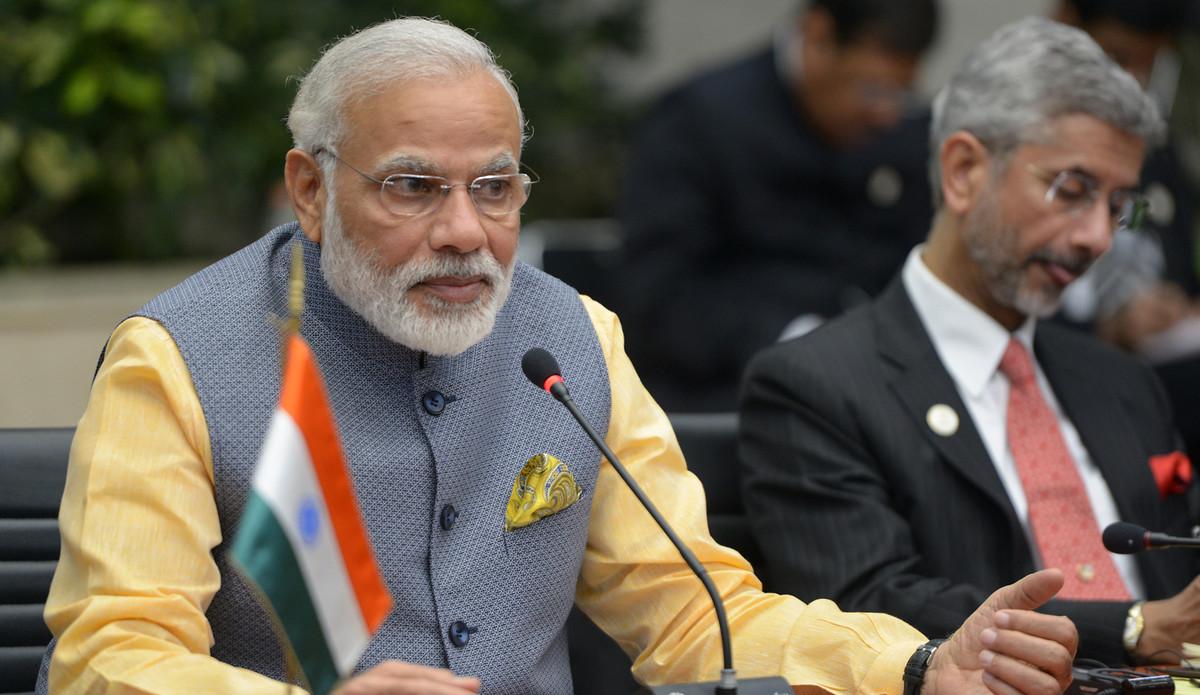This development is worrying to the BJP, since several regional parties, including coalition partners, see its triumphs in recent years as an increasing threat to their own existence and are con-sidering withdrawal from the coalition.
Since Narendra Modi succeeded in achieving a clear victory for the BJP in the parliamentary elections of 2014, the party has also been able to prevail in most of the succeeding elections at the state level. The Indian press calls this phenomenon the “Saffron Surge” owing to the BJP’s bright orange party colour. While in 2014 the BJP was the governing party only in five states, with INC governing 13 and the remaining states led by regional parties, a significant transformation has been observed since then. In 2018, Modi’s BJP is part of 20 out of 29 state governments whilst the Congress Party only remains in the government in four states. The state-level changes have had an impact on the national level also, since the members of the upper chamber of the Indian Parliament, the Rajya Sabha, are elected by the members of the legislative assemblies which is how the state parliaments in India are called. This means that since 2014 both the Congress Party and the regional parties have lost considerable influence and significance at both national and state levels.
Role of the Rajya Sabha
The Rajya Sabha, like Germany’s Bundesrat (Federal Council), provides state representation at the federal level. In proportion to their respective shares of the population, the state parliaments elect 233 representatives to the upper chamber of parliament. In addition, the President of India nominates twelve other members for the Rajya Sabha who have achieved prominence in fields such as art, science or sports. These parliamentarians have a mandate of six years, with one third of the Rajya Sabha up for election every two years. The parliamentary upper chamber becomes important since constitutional amendments require a two-thirds majority in the upper house. Moreover, it also has an impact on regular legislation. In important issues, it can block initiatives by the governing majority in the Lok Sabha, the lower house of the parliament. This became apparent recently in the case of the so-called “Triple Talaq Bill”. The bill aimed to criminalise a divorce practice based in Islamic law. It was rejected by a majority in the Rajya Sabha and thus did not become law.
Significance of the Rajya Sabha elections
It could already be predicted that the power structure in the upper chamber would not be substantially altered by the elections since the transformation of the state-level political landscape would only be gradually reflected in the Rajya Sabha due to the rolling election process. Prior to the elections, the BJP held around 23 percent of the seats, and even with its coalition partners in the National Democratic Alliance (NDA), this figure only rose to around 31 percent. Due to the composition of the state parliaments, attaining a majority in the upper chamber was impossible. The Congress Party and above all the regional parties that were influential at the state level would therefore also hold a clear majority in the Rajya Sabha following the elections, with the result that they were able to block important Lok Sabha legislative initiatives. This indicates that the smaller regional parties hold influence along with the two major parties, INC and BJP, not only at the state level but also at the national level. Nevertheless, they only availed themselves to a limited extent of the power to block legislative initiatives. In this way, the BJP was able to adopt two important reform projects, since the INC also supported the bill in the Rajya Sabha and therefore proved to be a responsible opposition party. These included an amendment to the 2015 insurance law and the Goods and Services Tax (GST) that went into effect in 2017, a tax reform similar to Germany’s value-added tax that was likewise supported by a number of the regional parties in the Rajya Sabha.
Rajya Sabha elections on the state level
Fifty-nine seats in 16 states were contested in the Rajya Sabha elections on 15th and 23rd March. The selected members entered parliament on 2nd April. Only seven states saw opposing candidates. In the other states, candidates stood without opposition since rival candidacies did not appear promising. Elections with opposing candidates were held in Uttar Pradesh, West Bengal, Kerala, Karnataka, Jharkhand, Chhattisgarh and Telangana. Notable election results occurred, above all, in Uttar Pradesh, Karnataka and Jharkhand, where candidates were victorious who did not have sufficient votes in the run-up but profited from defectors from other parties.
In Uttar Pradesh, the most populous Indian state, ten members stood for election to the Rajya Sabha. The Samajwadi Party (SP) had previously elected six members to parliament, and the Bahujan Samaj Party (BSP) had sent two. INC and BJP had each elected a single member. Due to its landslide victo-ry in the 2017 state assembly elections, BJP secured a guarantee of at least eight seats in the 2018 Rajya Sabha elections. It nominated nine candidates, however, whilst SP and BSP each nominated one candidate. Accordingly, an election needed to be held, one in which the candidate of the minority BSP was unsuccessful since some BSP Members of Parliament cross-voted for the BJP candidate instead of for their own.
In Karnataka, four seats in the upper chamber were open. Whilst the BJP dropped from two seats to one, the INC, which had previously elected one mem-ber, now sent three into the Rajya Sabha. Although the regional Janata Dal (Secular) (JD(S)) Party nominated one of its own candidates, he was not the pick of all their members. Seven JD(S) parliamentarians had given notice that they would defect to the Congress Party, in this way helping its third candidate to find a way to the Rajya Sabha.
In Jharkhand, the BJP and INC were each successful in winning one seat. Previously the Congress and Jharkhand Mukti Morcha (JMM) parties had each elected one. It appeared initially that a second BJP candidate might benefit from defectors and be elected. The Electoral Commission disqualified two votes, however, leading to the election of the INC candidate.
In the remaining ten states, members were elected with parliamentary unanimity. There were major shifts in the states of Bihar, Gujarat, Maharashtra and Rajasthan. In Bihar, the BJP and its partner JD(U) lost three of their six members, with INC picking up one and two going to the Rashtriya Janata Dal (RJD). In Gujarat, BJP lost two of four seats to the Congress Party. In Maharashtra, BJP won a seat from the INC and another from the Nationalist Congress Party (NCP). The BJP was therefore able to send three members to New Delhi, the INC only one. NCP and Shiv Sena (SS) each picked up a seat. The BJP took two additional seats from the Congress Party in Rajasthan, thus claiming all three of the seats up for re-election.
Shifts in the Rajya Sabha
Overall, the BJP was able to expand its share from 58 to 69 seats, including those of its coalition partners for 35 percent of the members. The Congress Party lost four seats and will now have 51 members in the Rajya Sabha. Its coalition, the United Progressive Alliance (UPA), thus accounts for 57 members, corresponding to around 23 percent of the seats in the Rajya Sabha. The smaller regional parties collectively control 42 percent of the seats. Thus, in alliance with the Congress Party, they continue to have the power to block legislative initia-tives coming out of the Lok Sabha. The phenomenon of political defection became once again manifest in this election. In Uttar Pradesh, just one month before the elections, the parliamentarian Naresh Agrawal jumped from the SP to the BJP shortly after failing to secure the nomination of his own party for the Rajya Sabha. Even before that, leading Indian politicians were leaving their party and joining rival parties. These included Satpal Maharaj, formerly a leading INC politician in Uttarakhand, who switched to the BJP in 2014, and B.S. Anand Singh, a former minister from the state of Karna-taka, who switched his party affiliation in the opposite direction to the INC.
Is the NDA breaking up?
The slight shifts in the composition of the Rajya Sabha following the 2018 elections reflect a larger trend than it appears at first glance. This is due to the previously mentioned rolling election process in which the BJP’s successes at the state level are only later reflected in the Rajya Sabha. In the coming 16 months, another 45 Rajya Sabha seats will be up for election in states currently governed by the BJP. It can therefore be expected that the NDA will come close to achieving an absolute majority of 123 members in the upper chamber.
The current election results point to a continued growth of influence in the Rajya Sabha on the part of the BJP and the NDA, which it leads and thus increasingly reflecting indications that Narendra Modi could be reconfirmed as Prime Minister in the spring of 2019. However, this current trend is not predicting automatically the results of the Lok Sabha election 2019. Since the start of Modi’s first term, six parties have already left the NDA. As early as 2014, the Haryana Janhit Congress (BL) broke away from the NDA to stand in an alliance with the Congress Party in local elections. In the same year, the Marumalarchi Dravida Munetra Ka-zhagam (MDMK) also left the NDA, charging that the BJP government in Tamil Nadu would not represent the interests of the Tamils. In Kerala, the Revolutionary Socialist Party of Kerala (Bolshevik) (RSP(B)) ended its participation in the NDA in 2016 to stand in alliance with the Congress Party in elections there. Also in Tamil Nadu, the Desiya Murpokku Dravida Kazhagam (DMDK) left the NDA in 2016 to ally with the People’s Welfare Front for election purposes. In Maharashtra, Raju Shetty and his Swabhimani Paksha Party (SWP) terminated the coalition in 2017 after accusing Modi’s BJP government of establishing an “anti-farmer regime”. Finally, in March 2018 the NDA also lost the support of the TDP, an influential regional party in Andhra Pradesh, which it is also governing, and Telangana. TDP’s leader, Chief Minister Chandrababu Naidu, complained that Prime Minister Modi and his BJP were not looking after the interests of its partners, so they would be on their own in the struggle for their rights in par-liament. The departure of the TDP means a loss of six seats in the Rajya Sabha for the NDA, giving the BJP victory in the Rajya Sabha elections a bitter-sweet taste. Moreover, other parties such as Shiv Sena in Maha-rashtra have expressed their dis-pleasure with the BJP in the past and already announced that they will be contesting 2019 Lok Sabha elections on their own. This can be primarily explained by the fact that in India, too, junior partners in coalitions have a difficult time achieving visibility, being perceived as serious and not losing significance compared to the larger coalition partner. If other regional parties also renounce their allegiance, this could constitute a threat to a BJP victory in the Lok Sabha elections just a year from now.




